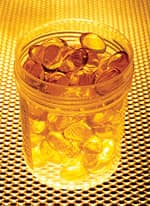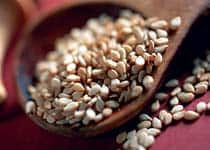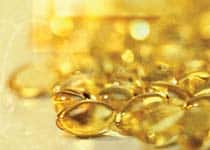Life Extension Magazine®
The Journal of the American Medical Association (JAMA) is one of world’s leading scientific publications. Since the early 1990s, JAMA has published articles about the benefits of dietary supplements, including folic acid, ginkgo, vitamins E, B6, and B12, among others.1-6 JAMA has also published studies showing that vitamin E (alpha-tocopherol) by itself has not always reduced heart attack risk factors.7 In January 1998, the Life Extension Foundation introduced the world to the multiple benefits of gamma-tocopherol.8 Until that time, the only form of vitamin E that consumers knew about was alpha-tocopherol. On August 11, 2004, JAMA published an extensive review article extolling the benefits of gamma-tocopherol.9 While there were similarities to the Life Extension and JAMA articles, the big difference is that readers of JAMA had to wait six years longer than Life Extension members to find out about the virtues of gamma-tocopherol. Vitamin E Alone Is Not EnoughIn its article, JAMA discusses the inconsistent findings about alpha-tocopherol and presents compelling evidence that gamma-tocopherol is the form of vitamin E most likely to reduce the risk of degenerative disease.9 The JAMA article reviewed the scientific basis for vitamin E’s cardioprotective effects. It then went on to describe why studies that showed no efficacy to vitamin E supplementation might have been flawed. The reasons cited for why these studies failed to provide reliable results include selection of subjects, stage of disease, end points, dosage, and source of the vitamin E. Another issue raised in the JAMA review is that vitamin E’s mechanism of preventing heart disease is most likely related to its ability to suppress LDL oxidation. A more targeted approach, JAMA asserts, would be to include only patients with enhanced levels of oxidative stress and low plasma levels of vitamin E in order to determine those most likely to benefit from antioxidant treatment.
As Life Extension members are well aware, a wide range of toxic factors—including excess blood levels of homocysteine, C-reactive protein, fibrinogen, insulin, glucose, and triglycerides—causes atherosclerotic heart disease.10 It is impractical to expect vitamin E by itself to prevent atherosclerosis. If healthy arteries are to be maintained, other pathological mechanisms have to be addressed as well.7 Gamma-Tocopherol’s Cancer-Preventive EffectsThe JAMA article notes that most clinical trials designed to examine vitamin E’s ability to prevent disease have used alpha-tocopherol. The article then considers recent molecular and epidemiological studies that have prompted researchers to examine the potential benefits of the gamma-tocopherol form of vitamin E. One study cited by JAMA showed that increased levels of gamma-tocopherol were associated with a significantly reduced risk of prostate cancer.11 The JAMA article goes on to note that the anticancer effects of high concentrations of selenium and alpha tocopherol were observed when gamma-tocopherol concentrations were also high. Another group of researchers interviewed by JAMA are investigating whether gamma-tocopherol can inhibit the growth of colon cancer. These researchers hypothesize that vitamin E levels inside cells are more important than blood levels in protecting DNA against the molecular mechanisms that can lead to cancer. Part of this rationale is that colon cancer cells take up gamma tocopherol much more effectively than alpha tocopherol. Furthermore, according to the JAMA article, when alpha and gamma-tocopherol are taken up together into cells, the presence of gamma-tocopherol increases the level of alpha-tocopherol.
The researchers interviewed by JAMA point out that gamma-tocopherol has unique properties that alpha-tocopherol does not have, including the ability to neutralize certain free radicals and suppress expression of a gene (ras-p21) that is known to cause cancer.12 The JAMA article reports on a rat study that showed gamma-tocopherol provides antioxidant protection to the cells lining the colon and to fecal material (possibly decreasing the production of mutagens). Another study cited by JAMA examined the influence of gamma- tocopherol on the expression of another gene called peroxisome proliferator activated receptor y (PPARy). This gene (PPARy) is a promising target for the prevention and treatment of colon and other cancers.13 Activation of PPARy with certain drugs such as Rezulin®, the JAMA article points out, can reduce tumor growth by inhibiting cellular proliferation and inducing programmed cell death (apoptosis). Life Extension members may remember that Rezulin® was taken off the market because of fatal liver toxicity. Other drugs in its class such as Avandia® and Actos®, however, have not demonstrated this type of liver toxicity.14 The comforting news is that gamma-tocopherol may function safely in a manner similar to these drugs, favorably influencing PPAR-y and thereby reducing cancer risk.
Others Journals Recognize Gamma-TocopherolIn addition to the JAMA article, other scientific journals published favorable studies in 2004 concerning gamma-tocopherol’s effects on disease prevention and treatment. Last March, the Archives of Biochemistry Biophysicia reported on a study that compared the effects of alpha tocopherol, gamma- tocopherol, and other forms of vitamin E in inhibiting the spread of prostate cancer cells.15 Gamma-tocopherol and its metabolite were the most effective inhibitors of the proliferation of prostate cancer cells. Other forms of vitamin E were much less effective. In July, the Annals of Nutrition Metabolism published an article (“Gamma-tocopherol—an underestimated vitamin?”) showing that gamma-tocopherol has higher trapping activity against dangerous nitrogen radicals than does alpha-tocopherol.16 The study authors note that low-level gamma-tocopherol correlates with increased risks of cardiovascular disease and cancer, and that gamma-tocopherol—but not alpha-tocopherol—provides beneficial natriuretic activity. Natriuretic agents enhance renal excretion of sodium and can help facilitate pressure/volume homeostasis in multiple tissues. Natriuretic agents may thus have applications in managing conditions such as hypertension and congestive heart failure. In January 2004, the journal Free Radical Biology and Medicine reported on “new and unexpected biological activities” with regard to gamma-tocopherol.17 The scientists stated that “these other tocopherols” possess anti-inflammatory, anticancer, and natriuretic functions. Epidemiological data were cited suggesting that gamma-tocopherol helps prevent certain types of cancer and heart attack better than alpha-tocopherol. The scientists concluded by warning that the: “. . . potential public health implications are immense, given the extreme popularity of alpha- tocopherol supplementation which can unintentionally deplete the body of gamma- tocopherol.”17
What Doctors Don’t Yet KnowWhile doctors are slowly being educated about the value of gamma-tocopherol, Life Extension has discovered a method to increase the antioxidant and anti-inflammatory properties of gamma-tocopherol. It turns out that when sesame seed lignans are added to gamma tocopherol in controlled laboratory studies, lipid peroxidation rates are lowered by 50% compared to gamma-tocopherol alone.18-20 Equally important are studies showing that sesame lignans increase tissue levels of gamma- tocopherol as much as 833% compared to no sesame.21 The significance of this finding is that while gamma-tocopherol in the blood can help protect against LDL-induced oxidation in the arterial wall, free-radical damage can still run rampant in the brain, kidneys, and other organs. Increasing tissue levels of gamma tocopherol is critical to neutralizing destructive free radicals generated in cells outside the vascular system. Sesame lignans have been shown to specifically increase tissue levels of gamma-tocopherol. In a brief, two-week study on human subjects, Life Extension measured various indicators of free radical and inflammatory damage. Gamma-tocopherol plus sesame lignans was shown to be 25% more effective on average than the same amount of gamma-tocopherol combined with toco-trienols. The significance of this finding is that tocotrienols are one of nature’s most potent antioxidants, yet low-cost sesame was found to work even better. While progressive doctors might soon be recommending gamma tocopherol-tocotrienol supplements to their patients, data uncovered by Life Extension indicate that the combination of gamma tocopherol and sesame lignans is a more effective antioxidant and anti-inflammatory approach to preventing degenerative disease. | |||||||
How Much Is Your Life Worth?If you wanted to learn about the lifesaving benefits of gamma tocopherol back in 1998, you needed to be a member of the Life Extension Foundation. No one else offered the benefits of gamma tocopherol back then. Dedicated supplement users have been consuming lots of alpha tocopherol and thinking they were protecting themselves against destructive free radicals. The Life Extension Foundation, on the other hand, long ago warned that those who take regular vitamin E supplements should also take gamma tocopherol, since alpha tocopherol can displace gamma tocopherol in the body.8 The most prestigious scientific journals in the world now agree with what Life Extension advocated more than six years ago.
Each month, members read about new ways of staving off aging and death in Life Extension magazine. It costs $75 a year to be a member of the Life Extension Foundation. Some people think that is a lot of money, but if the only benefit of membership were finding out about the critical importance of gamma tocopherol, this alone would have been well worth the membership fee. The good news for price-conscious consumers is that gamma tocopherol with sesame lignans costs a lot less than gamma tocopherol-tocotrienols and has been shown to better fend off toxic oxidative and inflammatory reactions in the body. Why to Stock Up on Nutrients NowAs long-time members know, now is the time to obtain extra-special discounts on all of the advanced formulations offered by the Life Extension Buyers Club. Every time you purchase a supplement that might add years of healthy life, you help support the world’s most ambitious scientific research program to abolish the scourge of age-related disease. I want to personally thank our 100,000+ members who have so generously supported our scientific efforts. The Life Extension Foundation funded a record-breaking amount of research in 2004, and has been awarded a $900,000 grant from the National Institutes of Health to further our pioneering scientific endeavors. For longer life, William Faloon | |
| References | |
| 1. Toole JF, Malinow MR, Chambless LE, et al. Lowering homocysteine in patients with ischemic stroke to prevent recurrent stroke, myocardial infarction, and death: the Vitamin Intervention for Stroke Prevention (VISP) randomized controlled trial. JAMA. 2004 Feb 4;291(5):565-75. 2. Hu FB, Willett WC. Optimal diets for prevention of coronary heart disease. JAMA. 2002 Nov 27;288(20):2569-78. 3. Engelhart MJ, Geerlings MI, Ruitenberg A, et al. Dietary intake of antioxidants and risk of Alzheimer’s disease. JAMA. 2002 Jun 26;287(24):3223-9. 4. Fletcher RH, Fairfield KM. Vitamins for chronic disease prevention in adults: clinical applications. JAMA. 2002 Jun 19;287(23):3127-9. 5. Fairfield KM, Flectcher RH. Vitamins for chronic disease prevention in adults: scientific review. JAMA. 2002 Jun 19;287(23):3116-26. 6. Le Bars PL, Katz MM, Berman N, Itil TM, Freedman AM, Schatzberg AF. A placebo-controlled, double-blind, randomized trial of an extract of Ginkgo biloba for dementia. JAMA. 1997 Oct. 22-29;278(16):1327-32. 7. Rapola JM, Virtamo J, Haukka JK, et al. Effect of vitamin E and beta-carotene on the incidence of angina pectoris. A randomized, double-blind, controlled trial. JAMA. 1996 Mar 6;275(9):693-8. 8. Available at: http://www.lifeextension.com/magazine/mag98/feb98_newproduct.html. Accessed October 12, 2004. 9. Friedrich MJ. To “E” or not to “E,” vitamin E’s role in health and disease is the question. JAMA. 2004 Aug 11;292(6):671-3. 10. Faloon W. What the news media did not reveal about Bill Clinton’s heart problem. Life Extension. November 2004:9-16. 11. Helzlsouer KJ, Huang HY, Alberg AJ, et al. Association between alpha-tocopherol, gamma tocopherol, selenium, and subsequent prostate cancer. J Natl Cancer Inst. 2000 Dec 20;92(24):2018-23. 12. Stone WL, Papas AM, LeClair IO, Qui M, Ponder T. The influence of dietary iron and tocopherols on oxidative stress and ras-p21 levels in the colon. Cancer Detect Prev. 2002;26(1):78-84. 13. Campbell SE, Stone WL, Whaley SG, Qui M, Krishnan K. Gamma (gamma) tocopherol upregulates peroxisome proliferators activated receptor (PPAR) gamma (gamma) expression in SW 480 human colon cancer cell lines. BMC Cancer. 2003 Oct 1;3(1):25. 14. Bae MA, Rhee H, Song BJ. Troglitazone but not rosiglitazone induces G1 cell cycle arrest and apoptosis in human and rat hepatoma cell lines. Toxicol Lett. 2003 Mar 20;139(1):67-75. 15. Galli F, Stabile AM, Betti M, et al. The effect of alpha- and gamma-tocopherol and their carboxyethyl hydroxychroman metabolites on prostate cancer cell proliferation. Arch Biochem Biophys. 2004 Mar 1;423(1):97-102. 16. Wagner KH, Kamal-Eldin A, Elmadfa I. Gamma-tocopherol—an underestimated vitamin. Ann Nutr Metab. 2004;48(3):169-88. 17. Hensley K, Benaksas EJ, Bolli R, et al. New perspectives on vitamin E: gamma-tocopherol and carboxyelthylhydroxychroman metabolites in biology and medicine. Free Radic Biol Med. 2004 Jan 1;36(1):1-15. 18. Kang M, Katsuzaki H, Osawa T. Inhibition of 2,2’-azobis[2,4-dimethylvaleronitrile]- induced lipid peroxidation by sesaminols. Lipids. 1998 Oct;33(10):1031-6. 19. Yamashita K, Lizuka Y, Imai T, Namiki M. Sesame seed and its lignans produce marked enhancement of vitamin E activity in rats fed a low a-tocopherol diet. Lipids. 1995 Nov;30(11):1019-28. 20. Yamashita K, Nohara Y, Katayama K, Namiki M. Sesame seed lignans and gamma-tocopherol act synergistically to produce vitamin E activity in rats. Nutr. 1992 Dec;122(12):2440-6. 21. Ikeda S, Tohyama T, Yamashita K. Dietary sesame seed and its lignans inhibit 2,7,8- trimethyl-2[2’-carboxyethyl]-6-hydrochroman excretion into urine of rats fed gamma-tocopherol. J Nutr. 2002 May;132(5):961-6. |







